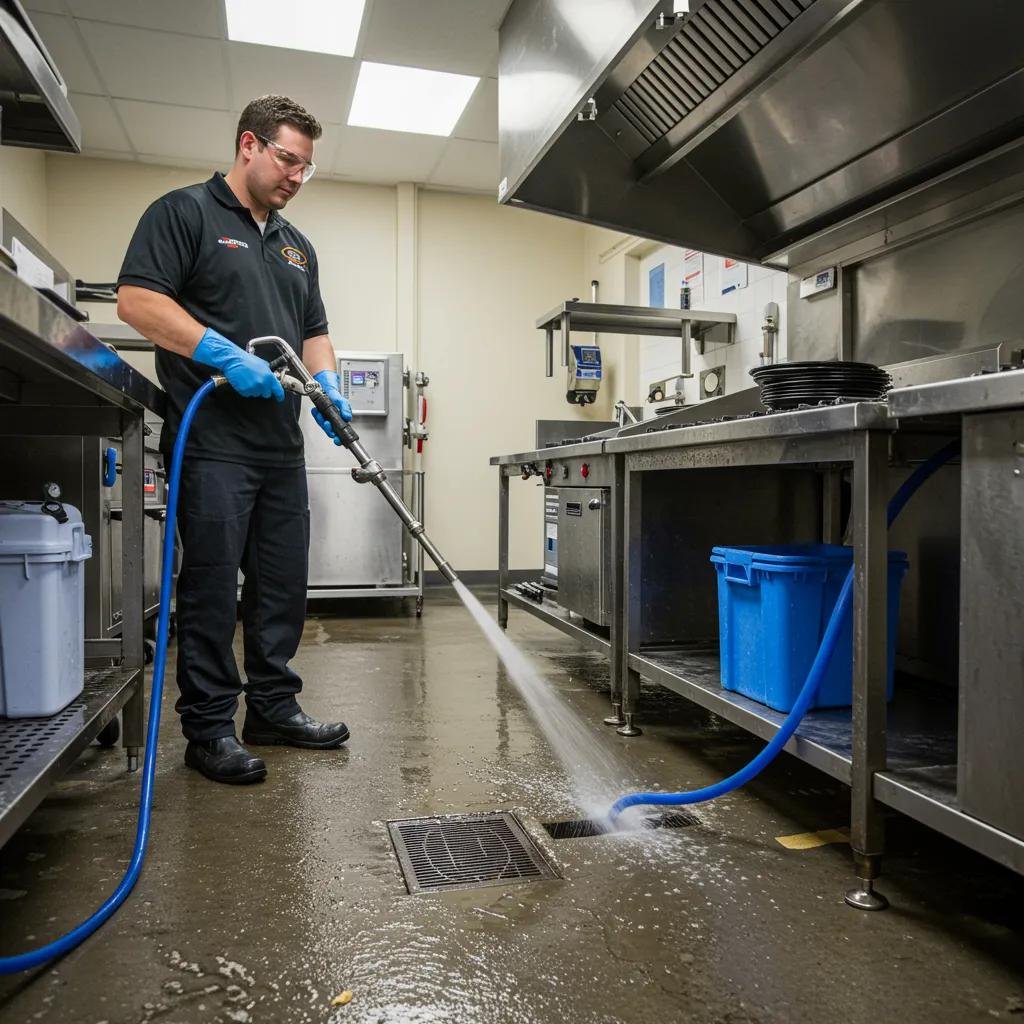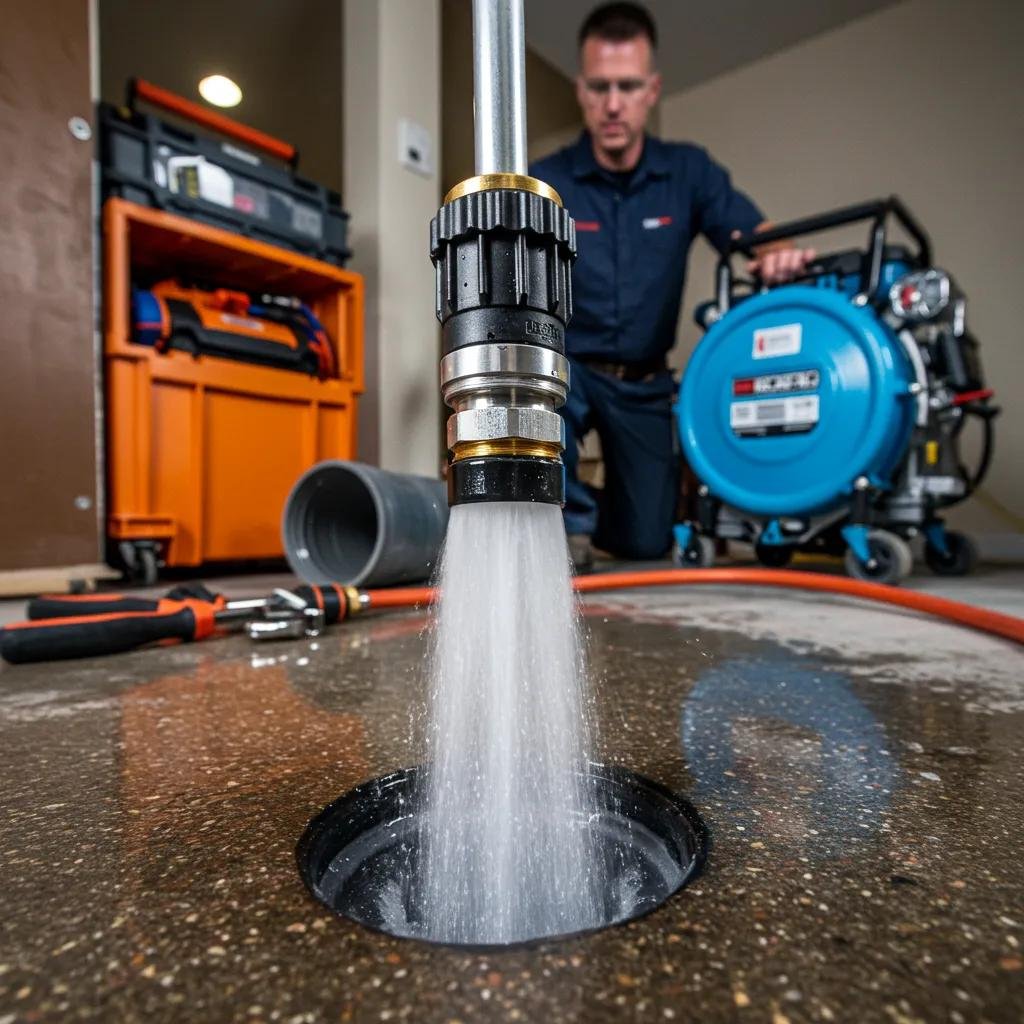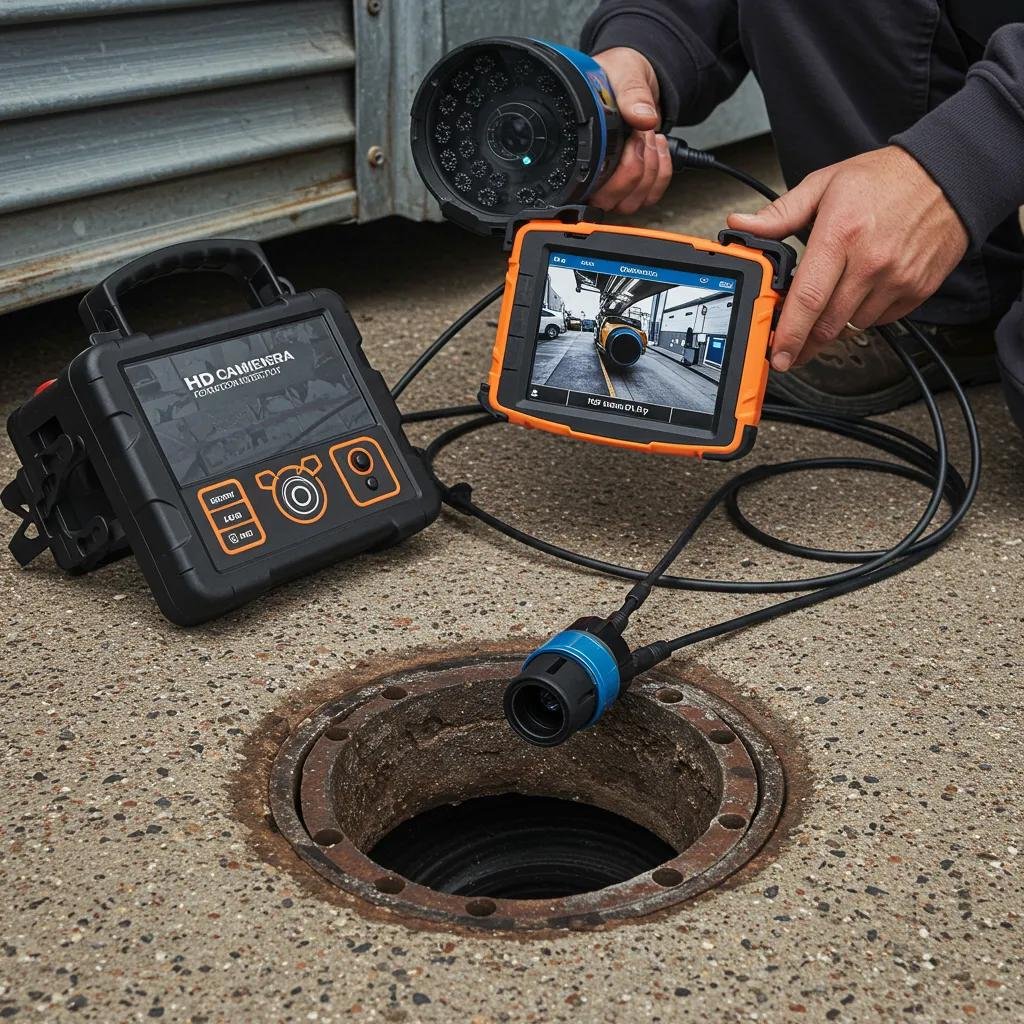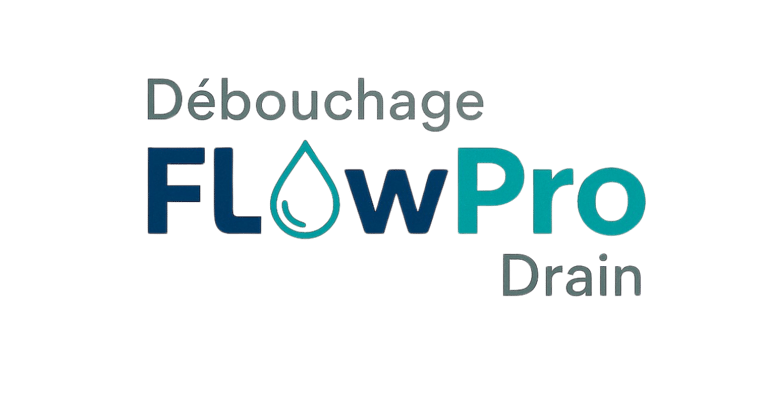Discover Top Commercial Drain Cleaning Solutions That Work
Searching for effective commercial drain cleaning solutions? Learn about top methods that eliminate clogs and ensure smooth drainage for your business.
10/21/202515 min read
Expert Commercial Drain Cleaning to Keep Your Business Flowing
Commercial drain cleaning clears obstructions, restores flow, and ensures your operations run smoothly by tackling the root causes of drain issues. This guide covers how businesses can benefit from efficient drain cleaning, why regular maintenance is key, how advanced services like hydro-jetting and HD camera inspections work, and how preventative plans can cut downtime and costs. You'll learn about practical diagnostics, industry-specific strategies for restaurants and industrial sites, and an action plan for emergencies that prioritizes quick fixes and long-term prevention. We'll explore major service methods, the tangible benefits of scheduled maintenance, and when to call for emergency help. This piece also dives into the technology behind hydro-jetting and camera inspections, helping facility managers understand their options and the return on investment from preventative care. The following sections answer your operational, technical, and procurement questions, showing how Flow Pro Drain’s commercial services—including 24/7 emergency support, hydro-jetting, HD camera inspections, commercial drain maintenance packages, and preventative plans—provide the solutions you need.
Why Is Commercial Drain Cleaning Crucial for Your Business?
Commercial drain cleaning prevents disruptions by removing grease, sediment, and blockages that impede flow and create health risks. Consistent cleaning restores your drains’ capacity, significantly reduces the chance of backups, and helps you avoid regulatory penalties, all while protecting your revenue and reputation. Proactive programs lower emergency repair costs, stabilize maintenance budgets, and safeguard customer and employee health. Understanding common causes, operational impacts, and industry-specific needs allows for a maintenance strategy that keeps your business running smoothly and prevents costly closures.
What Commonly Clogs Commercial Drains?
Commercial drains often get clogged by grease, food debris, mineral scale, tree roots, and sediment that gradually constrict flow. Grease and food particles are major culprits in restaurant kitchens and food processing facilities, where fats emulsify, build up on pipe walls, and trap other debris. Older plumbing systems can accumulate scale and mineral deposits, narrowing pipes. Tree roots can infiltrate joints, causing partial or complete blockages. Identifying these issues early leads to targeted solutions and prevents major sewer backups.
How Do Drain Problems Affect Your Business Operations and Budget?
Drain failures lead to direct repair expenses, staff overtime, lost sales due to closures, and reputational damage that can outlast the immediate problem. Emergency repairs can be significantly more expensive than routine cleaning, and business closures for cleanup and inspection mean lost revenue. Preventative maintenance shifts spending from unpredictable emergency line items to planned budgets and extends the life of your pipes, offering a clear return on investment by avoiding repeated emergency calls. A scheduled approach also simplifies compliance documentation and can streamline insurance claims.
Which Industries Face Higher Drain Risks?
Certain industries have a higher risk of drain issues and require specialized cleaning protocols. These include restaurants, food processing plants, multi-unit residential buildings, and large commercial properties. Restaurants and food processors deal with high volumes of grease and require frequent grease trap maintenance. Condominiums and commercial buildings need system-wide inspections to manage multiple connections and shared main lines. Industrial sites may encounter heavy sediment or chemical residues, necessitating specialized equipment and safety measures. Matching cleaning frequency and techniques to industry-specific risks minimizes incidents and regulatory exposure.
What Commercial Drain Cleaning Services Does Flow Pro Drain Offer?
Flow Pro Drain provides comprehensive commercial drain cleaning services, utilizing advanced diagnostics and powerful cleaning methods, all supported by scheduled maintenance plans to prevent and resolve blockages efficiently. Our core services include mechanical snaking for localized obstructions, hydro-jetting for heavy buildup, HD camera inspections for precise diagnostics, and customized preventative maintenance packages to keep your systems running smoothly. Our rapid-response emergency services complement scheduled work, minimizing downtime when unexpected issues arise. Together, these services form an integrated approach to pipeline management that targets root causes and provides clear documentation for facility managers.
The following list details the standard service categories that facilities rely on for uninterrupted operations.
Hydro-jetting: High-pressure water cleaning that effectively removes hardened grease, scale, and sediment.
HD camera inspections: Diagnostic video and certified reports that pinpoint the exact location and severity of issues.
Preventative maintenance plans: Scheduled cleaning and inspection cycles designed to minimize emergency incidents.
24/7 emergency services: Rapid response to severe backups, sewage leaks, and operational flooding.
These services combine diagnostic clarity with targeted cleaning actions to reduce repeat calls and maintain optimal flow. For businesses evaluating providers, selecting the right combination of inspection and cleaning services can significantly lower total cost of ownership and operational risk. Flow Pro Drain offers examples of these commercial services—including 24/7 emergency support, hydro-jetting, HD camera inspections, commercial drain maintenance packages, and preventative maintenance plans—to demonstrate how integrated programs work in practice.
How Does Hydro-Jetting Work for Commercial Drains?




Hydro-jetting uses high-pressure water, delivered through specialized nozzles, to scour pipe interiors, dislodge stubborn grease and scale, and flush debris downstream. Our technicians begin with an inspection to assess pipe material and blockage type, then select the appropriate nozzle and pressure settings to ensure effective cleaning while protecting pipe integrity. The process typically involves inspection, setup, controlled jetting, and verification with camera footage to confirm complete clearance. Proper operator training and equipment calibration are essential to ensure hydro-jetting removes deposits safely, even in older or delicate pipes.
What Are the Benefits of Camera Drain Inspections for Businesses?


HD camera inspections provide a clear visual diagnosis of blockages, cracks, root intrusion, and pipe offsets, enabling precise repairs rather than costly, broad exploratory excavation. Our inspections deliver timestamped video, still images, and severity ratings that facility managers can use for maintenance scheduling, warranty claims, and insurance documentation. By pinpointing exact problem areas, camera inspections reduce repair scope and cost, integrating seamlessly into preventative plans that prioritize high-risk sections. This targeted approach saves time and supports informed decision-making regarding repairs versus replacements.
How Do Preventative Maintenance Plans Protect Commercial Properties?
Preventative maintenance plans schedule regular cleaning, inspection, and reporting at defined intervals to prevent buildup and detect deterioration early, thereby minimizing emergency events and downtime. These plans typically include routine hydro-jetting or mechanical cleaning, periodic camera inspections, and detailed reports that track system trends and recommend necessary actions. A consistent maintenance schedule reduces grease accumulation and sedimentation, extends pipe life, and provides predictable budgeting for facilities. A structured maintenance calendar helps managers avoid expensive emergency repairs and ensures compliance with local sanitation standards.
When Should You Call for 24/7 Emergency Commercial Drain Services?
Emergency commercial drain services are essential when backups or leaks threaten operations, customer safety, or regulatory compliance. This includes situations like severe overflows, multiple fixtures backing up simultaneously, or visible sewage intrusion. Our rapid triage process begins with containment—stopping flow, isolating affected areas, and deploying temporary measures—followed by prioritized clearing and repair to restore operations. Emergency response focuses on minimizing immediate damage and restoring safe usage, then proceeds with inspection and a recommended remediation plan. Swift, documented emergency actions reduce long-term repair scope and allow for a faster return to normal operations.
How Does Hydro-Jetting Benefit Different Commercial Sectors?
Hydro-jetting offers sector-specific advantages by effectively addressing the types of deposits and obstructions most common in each facility. In foodservice and processing, hydro-jetting removes grease and organic buildup that lead to recurring clogs and regulatory violations. In industrial and large commercial systems, it clears scale, sediment, and mineral deposits that restrict large-diameter pipes. Proactive hydro-jetting, scheduled at appropriate intervals, prevents gradual performance degradation and reduces the need for emergency cleaning. By matching nozzle selection, pressure, and frequency to the sector’s specific waste profile, we optimize results and minimize service disruption.
The following list highlights the primary hydro-jetting benefits across various sectors.
Restaurants and food processing: Eliminates grease layers and food residue to meet stringent sanitation standards.
Industrial and commercial buildings: Removes hardened scale and heavy sediment to maintain critical flow capacity.
Multi-unit residential properties: Clears shared mains and lateral lines to prevent tenant disruptions and maintain comfort.
This targeted approach informs maintenance schedules and tool selection for facility managers, ensuring hydro-jetting delivers maximum operational benefit while preserving asset integrity.
What Can HD Camera Inspections Detect in Commercial Drain Systems?
HD camera inspections can detect cracks, joint offsets, root intrusion, scaling, and partial or complete blockages with exceptional precision and context-rich visual evidence. Our cameras record the exact distance from an access point and capture stills and video that quantify severity, shaping effective corrective strategies. Early detection of structural issues allows managers to schedule minimal interventions before catastrophic failure occurs, and the visual record supports procurement and contractor selection. The clarity of HD footage enhances planning accuracy and reduces the likelihood of unexpected costs.
How Do Camera Inspections Help Prevent Costly Drain Emergencies?
Camera inspections prevent emergencies by shifting maintenance from a reactive approach to proactive, condition-based planning: recurring weak points are identified and addressed before they lead to full backups. By correlating inspection data over time, managers can prioritize sections showing progressive deterioration and schedule repairs during off-peak hours. Targeted repairs informed by camera evidence are less invasive and less costly than broad excavation or emergency replacements. This proactive cycle reduces both the frequency and severity of drain emergencies throughout a facility’s lifecycle.
What Is Included in a Certified Drain Inspection Report?
A certified drain inspection report from Flow Pro Drain typically includes time-stamped HD video, annotated still images, distance markers, a detailed description of findings, severity ratings, and recommended actions with estimated effort. Reports categorize risks (minor, moderate, critical) and propose follow-up steps such as targeted hydro-jetting, localized repairs, or segment replacement. Managers receive comprehensive documentation that supports budgeting, scheduling, and regulatory compliance. These reports serve as a central record for preventative maintenance planning and communication with insurers or regulators.
What Are the Key Features of Commercial Preventative Drain Maintenance Plans?
Preventative drain maintenance plans establish scheduled cleaning and inspection intervals, define included services like hydro-jetting and camera checks, and specify reporting deliverables to track system health. Effective plans are tailored to risk levels and facility types, offering more frequent interventions for high-use kitchens and customized schedules for residential or commercial properties. The primary goal is to reduce emergency events, extend pipe service life, and create predictable maintenance costs. Below, we compare typical package types and their expected ROI to help you select the most suitable plan.
The following list outlines common inclusions in our maintenance packages and what managers should expect.
Inspection and reporting: Scheduled camera checks with documented findings and recommendations.
Cleaning services: Hydro-jetting or mechanical cleaning aligned with usage patterns.
Priority emergency access: Dedicated support for rapid response during business-impacting events.
In summary, well-structured preventative plans shift spending from emergency fixes to predictable maintenance, delivering measurable savings and enhanced reliability.
How Often Should Businesses Schedule Commercial Drain Cleaning?
Scheduling frequency is determined by usage intensity: high-volume commercial kitchens typically require cleaning every 3–6 months, while condominiums and standard commercial buildings may benefit from semi-annual to annual cycles. Facilities with a history of recurring buildup or past emergencies should increase frequency and use camera inspections to refine intervals. Condition-based scheduling, guided by inspection findings, often yields a better ROI than rigid calendars because it directs resources where the risk is highest. Adjustments after an initial assessment ensure maintenance efforts align with actual system conditions.
What Maintenance Packages Are Available for Restaurants, Condominiums, and Commercial Buildings?
Our maintenance packages range from specialized grease-management programs for restaurants to comprehensive system plans for large commercial properties, each combining inspection, cleaning, and reporting elements. Restaurant packages focus on grease trap coordination, frequent jetting, and compliance documentation. Condominium packages prioritize building-wide inspections and tenant communication protocols, while commercial building packages include system surveys, scheduled jetting, and targeted repairs. Choosing the right tier depends on traffic volume, waste type, and operational priorities; combining inspection and cleaning in a single plan yields the best preventative outcomes.
How Does Preventative Maintenance Save Businesses Money?
Preventative maintenance saves money by reducing the frequency of emergency repairs, preventing revenue loss from unexpected closures, and extending the service life of piping and related assets. Early interventions are typically less expensive and less disruptive than major repairs or replacements necessitated by neglected deterioration. Predictable maintenance budgets also improve financial planning and reduce the need for unplanned capital expenditures. Over time, a documented maintenance history can streamline insurance processes and demonstrate due diligence in facility management.
What Should Businesses Know About Emergency Commercial Drain Services?
Emergency commercial drain services prioritize rapid containment, diagnosis, and mitigation to minimize operational impact and health risks. Effective emergency response includes immediate measures to stop flow, protect affected areas, and restore critical functions quickly, followed by verification and a recommended remediation plan. Knowing when to call for emergency services, what information to provide, and what to expect on-site accelerates resolution and reduces downstream costs. The following section explains response components, common emergencies, and how rapid action limits disruption.
The following checklist outlines what managers should prepare when an emergency occurs.
Identify the problem: Is it an overflow, a sewage smell, or multiple fixtures backing up?
Isolate affected zones: Close valves or restrict access to protect staff and customers.
Document conditions: Take photos or notes for later reporting and insurance claims.
After containment, our emergency crews perform prioritized clearing and temporary remediation to safely reopen affected operations.
How Does Flow Pro Drain Provide 24/7 Emergency Response?
Flow Pro Drain offers 24/7 emergency services that include rapid dispatch, on-site triage, immediate mitigation to restore operations, and follow-up inspection and reporting to document actions taken. The emergency workflow typically involves containing the issue, performing targeted clearing (using hydro-jetting or mechanical methods as appropriate), and camera verification to confirm resolution. Clients receive a recommended remediation plan and certified documentation detailing findings and next steps. This round-the-clock availability minimizes downtime and supports business continuity during critical events.
What Types of Commercial Drain Emergencies Are Common?
Common commercial drain emergencies include sewage backups, large-scale blockages affecting multiple fixtures, flooding in operational spaces, and grease trap failures causing immediate backups. Each type requires a rapid assessment to determine whether containment, urgent clearing, or temporary bypass solutions are needed to reopen facilities. Quick prioritization of impacted areas and implementation of safety measures minimize exposure risks to staff and customers. Immediate documentation of the incident helps managers coordinate repairs and compliance reporting.
How Can Rapid Emergency Services Minimize Business Disruption?
Rapid emergency services minimize disruption by containing contamination, restoring partial operations through temporary fixes, and scheduling permanent repairs during off-hours to avoid prolonged closures. Early action reduces the scope of repairs because smaller interventions often prevent catastrophic collapse or progressive damage. After initial mitigation, our crews perform camera verification and produce reports used to plan efficient long-term repairs, lowering total downtime. Fast, documented response preserves customer confidence and limits reputational harm.
Why Choose Flow Pro Drain for Your Commercial Drain Cleaning Needs?
Choosing a provider with specialized drain expertise, clear documentation, and reliable emergency availability reduces operational risk and delivers measurable maintenance outcomes. Key selection criteria include local licensing and insurance, transparent pricing, certified inspection reports, and tailored maintenance packages aligned with industry needs. Providers that combine hydro-jetting, HD camera inspections, preventative maintenance, and emergency response offer an integrated lifecycle solution for commercial drains. Flow Pro Drain’s commercial offerings exemplify how combining these elements supports continuity in Montreal, Laval, and the South Shore.
The following list highlights decision points managers should consider when selecting a drain service partner.
Verify licensed and insured status and clear documentation practices.
Confirm availability of diagnostic tools like HD camera inspections and certified reports.
Assess emergency response capabilities and clarity of maintenance package options.
What Are Flow Pro Drain’s Unique Value Propositions for Businesses?
Flow Pro Drain emphasizes licensed, specialized drain services with transparent pricing, certified inspection reports, and 24/7 emergency availability to support commercial operations. Our approach combines diagnostic clarity from HD camera inspections with effective cleaning methods like hydro-jetting and structured preventative maintenance packages. This combination reduces repeat failures and provides documented evidence for managerial and regulatory needs. For facilities seeking an integrated strategy, our service suite demonstrates how targeted interventions and scheduled care reduce total maintenance costs.
How Does Flow Pro Drain Comply with Montreal and Regional Regulations?
Flow Pro Drain operates with a strong focus on local compliance, providing certified inspection reports and documented maintenance records that support regulatory requirements and sanitation oversight. Our reporting practices include video and descriptive documentation that facility managers can use for compliance verification and insurer communication. Selecting a licensed provider ensures work is performed to regional standards and that documentation is readily available. We encourage managers to request inspection reports and maintenance records to demonstrate due diligence.
What Do Customers Say About Flow Pro Drain’s Commercial Services?
Commercial clients report measurable improvements in downtime frequency and fewer emergency incidents after adopting scheduled maintenance and targeted cleaning informed by camera inspections. Reported outcomes include successful emergency responses that quickly restored operations and preventative plans that significantly reduced repeated blockages. These practical results align with the intended ROI of scheduled programs: fewer emergencies, predictable budgets, and extended asset life. Businesses requiring documented outcomes often use certified reports to track improvements and validate cost savings over time.
Frequently Asked Questions
What are the signs that a commercial drain needs cleaning?
Signs that a commercial drain needs cleaning include slow drainage, frequent backups, unpleasant odors, and gurgling sounds from fixtures. If multiple drains are backing up simultaneously, it may indicate a more significant blockage in the main line. Additionally, visible signs of grease buildup or water pooling around drains can signal the need for immediate attention. Regular monitoring of these symptoms can help prevent more severe issues and costly emergency repairs.
How can businesses choose the right drain cleaning service provider?
When selecting a drain cleaning service provider, businesses should consider factors such as the provider's experience, licensing, and insurance status. It's essential to look for companies that offer a range of services, including hydro-jetting and camera inspections, as well as transparent pricing and documented results. Customer reviews and testimonials can provide insight into the provider's reliability and effectiveness. Additionally, inquire about their emergency response capabilities and maintenance plans tailored to your specific industry needs.
What should businesses do to prepare for a drain cleaning service?
To prepare for a drain cleaning service, businesses should clear the area around the affected drains to provide easy access for technicians. It's helpful to document any symptoms or issues observed, such as slow drainage or backups, to inform the service team. Additionally, ensure that any necessary permissions are in place for access to the facility. Having a point of contact available during the service can facilitate communication and address any immediate concerns that may arise.
How do businesses know if they need emergency drain services?
Businesses should consider emergency drain services if they experience severe backups, visible sewage leaks, or multiple fixtures backing up simultaneously. Other indicators include strong sewage odors or flooding in operational areas. If the situation poses a risk to health, safety, or regulatory compliance, immediate action is necessary. Quick response to these emergencies can minimize damage and restore operations, making it crucial to have a reliable emergency service provider on hand.
What are the long-term benefits of regular drain maintenance?
Regular drain maintenance offers numerous long-term benefits, including reduced risk of unexpected blockages and emergencies, extended lifespan of drainage systems, and improved overall system performance. By scheduling routine inspections and cleanings, businesses can identify potential issues early, allowing for timely interventions that prevent costly repairs. Additionally, consistent maintenance helps ensure compliance with health regulations, enhances operational efficiency, and can lead to significant cost savings over time by avoiding emergency service expenses.
Can hydro-jetting be used on all types of commercial drains?
Hydro-jetting is versatile and can be used on many types of commercial drains, including those in restaurants, industrial facilities, and multi-unit residential properties. However, it is essential to assess the pipe material and condition before proceeding, as older or damaged pipes may require more cautious application. A professional drain service provider will conduct an inspection to determine the suitability of hydro-jetting for specific systems, ensuring effective cleaning without risking further damage.
What role do HD camera inspections play in drain maintenance?
HD camera inspections play a crucial role in drain maintenance by providing visual diagnostics of the drainage system's condition. They help identify blockages, cracks, root intrusions, and other issues that may not be visible externally. This technology allows for targeted repairs, reducing the need for invasive excavation. By integrating camera inspection findings into maintenance plans, businesses can prioritize repairs, optimize cleaning schedules, and ultimately enhance the longevity and performance of their drainage systems.
How Often Should Commercial Drains Be Cleaned to Avoid Blockages?
High-use commercial kitchens generally need cleaning every 3–6 months, while condominiums and many commercial buildings may follow semi-annual to annual cycles depending on inspection findings. Facilities with known recurring problems should adopt shorter intervals and use camera inspections to refine cadence. Condition-based scheduling driven by inspection results produces better ROI and prevents unnecessary service while targeting high-risk areas. Regular review of maintenance records helps adjust frequency over time.
What Is Hydro-Jetting and Why Is It Effective for Businesses?
Hydro-jetting is a high-pressure water cleaning method that dislodges grease, sludge, scale, and solid obstructions, restoring pipe capacity without excavation. It is effective because it removes the adhered layers that cause recurring clogs and because nozzle selection and pressure control tailor cleaning to specific deposit types. For businesses, hydro-jetting reduces repeat service calls and is scalable for both small-diameter kitchen lines and large commercial mains. Post-jetting camera verification confirms clearance and validates the procedure.
How Much Does Commercial Drain Cleaning Typically Cost?
Cost depends on severity, pipe size and material, accessibility, and selected service type (inspection, hydro-jetting, or repairs), so facility managers should request a scoped inspection and written estimate. Factors such as emergency response times, need for excavation, and required repairs increase cost, while scheduled preventative work typically reduces lifetime expense. Managers should ask for itemized scopes and certified inspection documentation to compare offers reliably. Transparent pricing and documented findings support better procurement decisions.
How Can Businesses Schedule Preventative Maintenance or Emergency Services?
To schedule services, prepare basic site information, describe symptoms or provide recent inspection records, and set availability windows for on-site access; emergency services require immediate symptom details and location of affected fixtures. A typical scheduling workflow is: request service → preliminary consultation/inspection → scope and estimate → agreed schedule and execution. After service, expect a report and recommended follow-up actions. For urgent incidents, request immediate dispatch and documented verification following mitigation.
For businesses seeking an integrated solution, Flow Pro Drain’s suite of commercial offerings—including 24/7 emergency services, HD camera inspections, and preventative maintenance plans—illustrate how coordinated diagnostics and cleaning reduce downtime and support reliable operations. This article has outlined the technical foundations, sector-specific applications, and decision framework facility managers need to implement efficient commercial drain cleaning solutions that protect business continuity.
Conclusion
Implementing efficient commercial drain cleaning solutions is essential for maintaining operational continuity and preventing costly emergencies. By utilizing services like hydro-jetting and HD camera inspections, businesses can effectively manage blockages, enhance system performance, and ensure compliance with health regulations. Regular maintenance not only extends the life of drainage systems but also provides measurable cost savings over time. Discover how Flow Pro Drain can support your business with tailored maintenance plans and emergency services today.
Services
Expert drain cleaning and emergency services available.
Contact
Support
Info@flowprodrain.com
438-320-0500
© 2025. All rights reserved.
📍 Areas We Serve
Montréal • Laval • North/South Shore•
2500 Rue Jarry E, Montréal, QC H1Z 2C4
